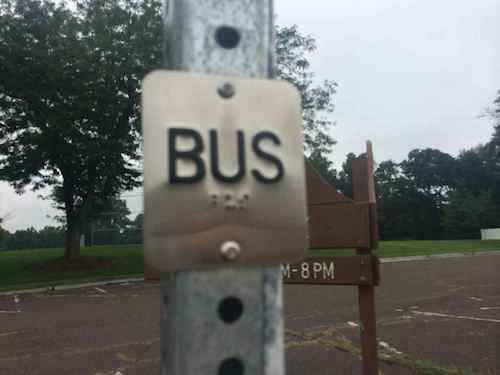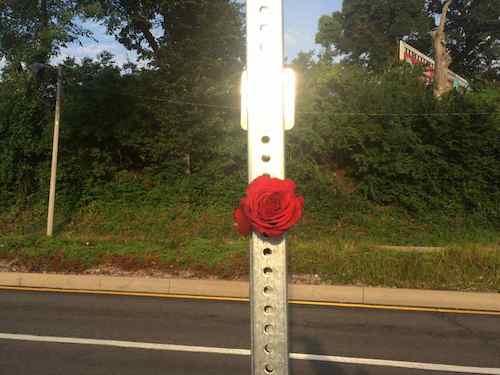Braille Bus Stop Signs Shouldn’t Face The Street
For nearly a decade this blog has been about my observations, even if some think they’re trivial. Monday & Tuesday I noticed something I’d never seen before, braille signs to mark bus stops.


Out of curiosity I turned to the web to learn more. I found the following on a site administered by Easter Seals, Inc., but funded by the U.S. Department of Transportation & Federal Transit Administration:
Question: Is braille required on bus stop signs?
Answer:
For bus stops, there is no requirement for braille. However, if braille is provided, then the information must meet certain standards.
The braille information should be placed uniformly on the bus stop pole, and not on the traffic side. Always ensure that braille dots are raised to the touch. If possible, have a person who reads braille confirm that it is the correct label. Materials for braille include embossed labels, polymer, chemically welded raster beads, cast metal and stamped metal. Costs vary depending on the process and materials.Placement and orientation of braille is important and should be placed below any corresponding text. Braille signs should be mounted and installed in the correct location. For details on signage, see Chapter 7, Communication Elements and Features in the 2010 ADA Standards.
http://www.ada.gov/regs2010/2010ADAStandards/2010ADAstandards.htm#c7
Other accessibility considerations include providing bus stop sign poles that are stylized with tactile features to distinguish them from other poles for customers with visual impairments. For example, some transit systems have selected a square pole that uniquely identifies the stop from traffic sign posts. It is important to consider tactile raised letter information with the braille information as many people who are blind or have low vision are not braille readers. (Project ACTION)
The 2nd sign shown above, with the rose, is facing the street. Metro’s signs are often installed toward the street, not toward the pedestrian on the sidewalk. The visually impaired want to be independent like anyone else, the least we can do is think where they’d walk to read a braille sign.
— Steve Patterson